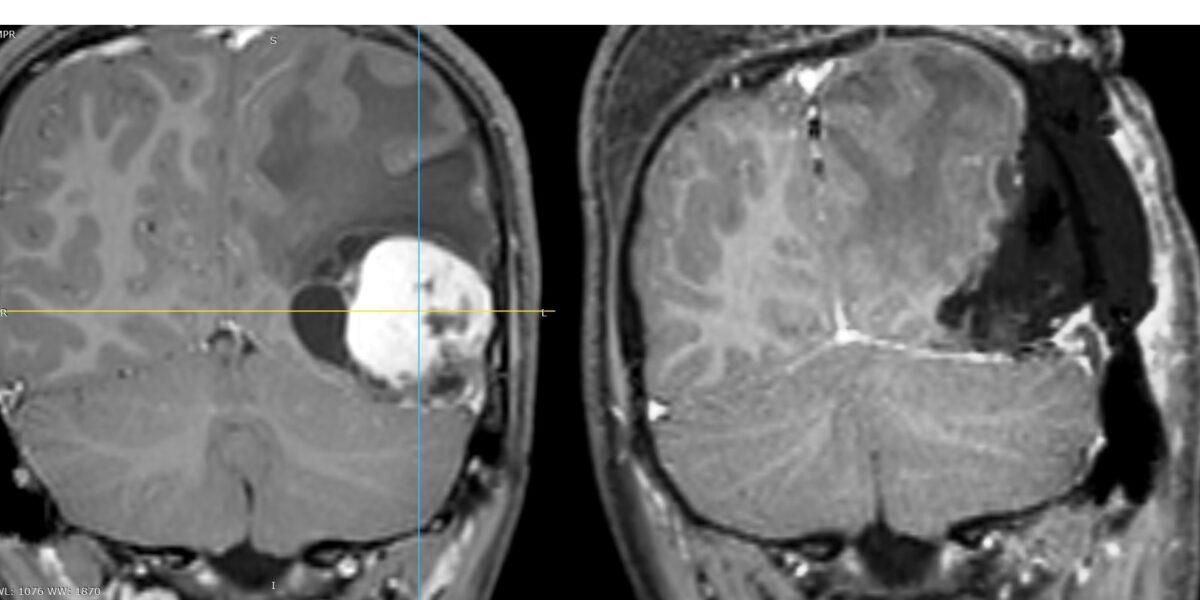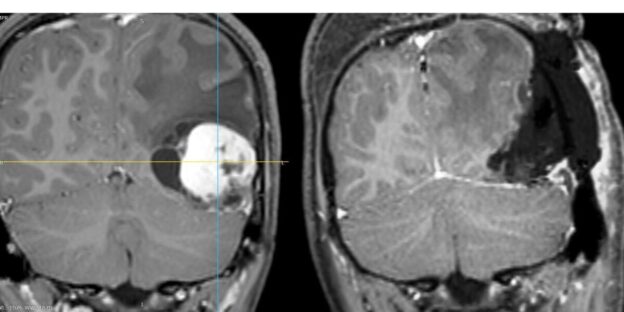The best Glioma Surgery in Guntur Dr. Raos
Glioma is a rare, deadly disease that causes abnormal growth of cells in the brain. Gliomas are the most common type of primary brain tumor. Gliomas arise from the supportive cells of the central nervous system, either from the brain or spinal cord. A glioma location and rate of growth decide the symptoms and emergencies. Glioma type determines the prognosis. Typically, Glioma treatment includes surgery, radiation, chemotherapy, targeted therapy, and clinical trials. Dr. Rao’s hospital is the best brain tumor surgery hospital and best glioma surgery hospital in Guntur with UpToDate technology. Dr. Rao is the best brain tumor neurosurgeon in Guntur.
A. Causes of glioma: exact cause not known
- Genetic mutations usually cause glioma
- Environmental toxins can also cause glioma.
- Glioma can also be caused by radiation exposure.
B. Types of glioma
- Astrocytoma
- Ependymoma
- Oligodendroglioma
C. Symptoms of a glioma
- Neurological symptoms –
- Headache
- Nausea or vomiting
- Seizures
- Difficulty with balance
- Vision problems – blurred vision, double vision, or loss of peripheral vision
- Speech difficulties
- Urinary incontinence
- Behavioral signs – cognitive issues,
- Confusion or a decline in brain function
- Memory loss
- Personality changes or irritability
D. Diagnosis of glioma
1. Symptoms should be taken into account
2. Imaging tests can be used –
- MRI of brain and spine both plain and contrast, others like
- Perfusion MRI,
- Functional MRI,
- Diffusion-weighted MRI,
- Diffusion Tensor Imaging MRI
- MR spectroscopy;
- CT imaging in those MRIs is contraindicated;
- PET scan to know where the tumor metastasized.
E. Treatment of glioma:
The size, type, grade, and location of the tumor, as well as your age, overall health, and preferences will decide the kind of surgery or extent of resection and prognosis.
Dr. Rao may prescribe steroids or antiepileptic drugs to reduce swelling and relieve pressure on affected brain areas or control seizures.
Surgery: safe maximal resection is the goal; Surgery is helpful for Biopsy – tissue diagnosis, molecular genetic analysis, and specific treatment drug administration. Types of surgery are Biopsy, partial resection, and gross total resection. Dr. Rao does minimally invasive surgery with six pillars or a 360-degree approach using Image-guided surgery, neuronavigation, access with tubular retractors, and high-end optics like microscopes or endoscopes, resection tools like SONOSTAR along with neuromonitoring, which aids in safe maximal resection at eloquent areas. This high-end technology is available only in Dr. Rao’s hospital. We use an intraoperative CT scan to analyze the completeness of tumor resection. Removing some of the tumor may ease the symptoms and signs and aid in radiation and chemotherapy if the cancer is not completely removable without causing neurological deficits.
Radiation therapy: This is part of treatment, especially in high-grade glioma. Radiation uses either X-rays or protons to kill tumor cells.
Chemotherapy: Temozolomide concurrent chemotherapy along with radiation therapy and then for 12 cycles.
Immunotherapy
F. Adjunctive treatments for glioma
1. Stem cell therapy
2. Gene therapy
3. Targeted therapy: Bevacizumab VEGF antagonist
G. Prognosis of glioma
1. Most people with glioma will die from the disease based on the grade, malignancy, and resection of the tumor
2. Some people with glioma may live for several years; the lower grade will survive around ten years, Grade 3 will be approximately three years, and Grade 4 will be about 18 to 24 months
3. Some people with glioma may live for decades – the reason remains unknown
H. Life with glioma
1. Being diagnosed with glioma can be a shock
2. Living with glioma can be challenging
3. There are ways to cope with the disease
I. Life after glioma surgery
- Most people can return to their normal activities
- Some people may experience a few complications
- Some people may need additional surgery
J. Rehabilitation after treatment
Rehabilitation is necessary as gliomas arise from the areas that control motor skills, vision, and speech.
· Physical therapy
· Occupational therapy
· Speech therapy
· Tutoring for school-age children
III. Conclusion
Glioma is a rare, deadly disease that causes abnormal growth of cells in the brain. Gliomas are the most common type of primary brain tumor. Gliomas arise from the supportive cells of the central nervous system, either from the brain or spinal cord. A glioma location and rate of growth decide the symptoms and emergencies. Glioma type determines the prognosis. Typically, Glioma treatment includes surgery, radiation, chemotherapy, targeted therapy, and clinical trials.


